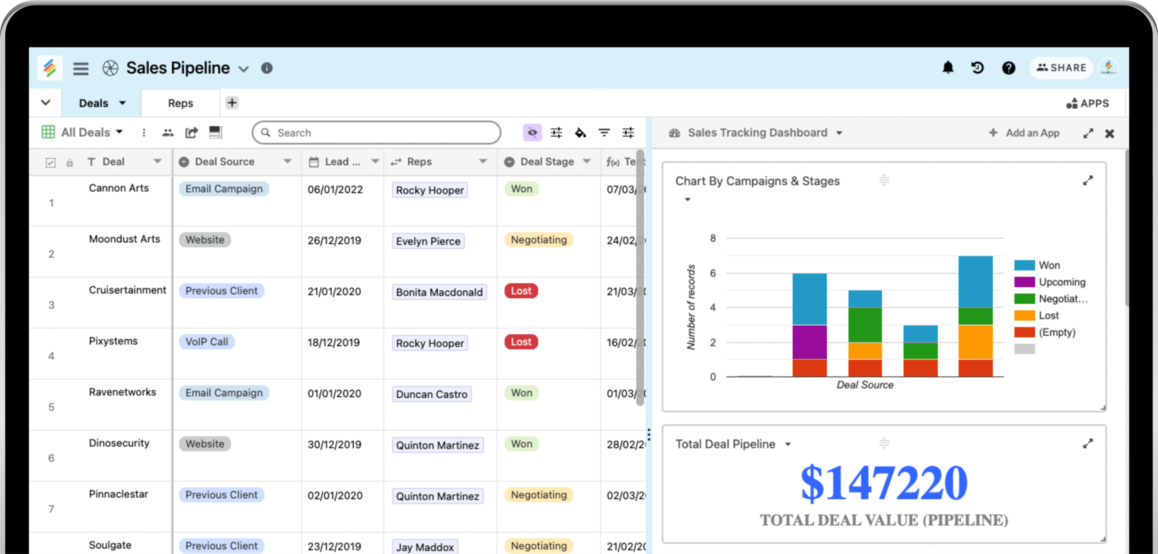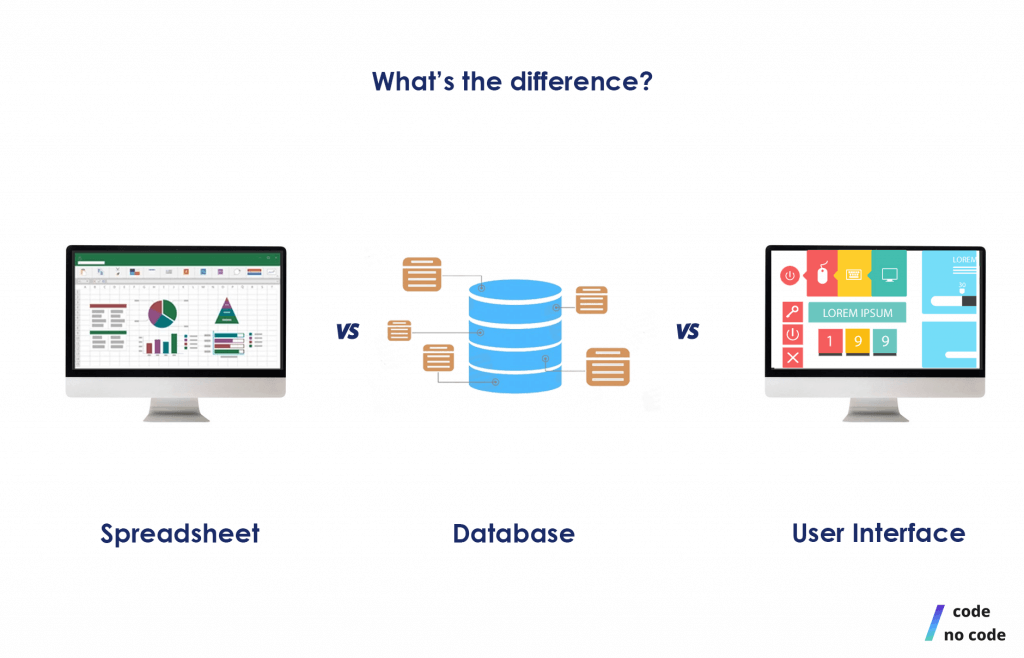No-Code Solutions for Open Platform Data Source Creation: Develop Without Coding Abilities
No-Code Solutions for Open Platform Data Source Creation: Develop Without Coding Abilities
Blog Article
Exploring the Advantages of Scalable Databases That Require No Coding Abilities for Effective Information Administration Solutions
The development of scalable databases that remove the need for coding abilities presents a transformative opportunity for organizations seeking reliable information monitoring solutions. As we consider the effects of such advancements, it ends up being essential to take a look at exactly how they can reshape the landscape of data administration and drive sustainable growth in an affordable environment.
Enhanced Ease Of Access for Customers
Boosted ease of access for customers is a crucial aspect of scalable data sources, making sure that data management systems are straightforward and intuitive. In an era where data-driven decisions are critical, accessibility permits a larger array of individuals, consisting of those without extensive technological competence, to involve with data source systems efficiently. This democratization of information access promotes improved collaboration throughout divisions, encouraging workers to make and extract insights notified decisions.
Straightforward user interfaces, such as drag-and-drop attributes and aesthetic information depiction, simplify complex information communications. These improvements reduce the understanding contour related to conventional data source monitoring, enabling users to concentrate on leveraging data rather than coming to grips with technological complexities. In addition, scalable data sources commonly include adjustable dashboards and real-time analytics, giving users with prompt understandings tailored to their details requirements.

Cost-Effectiveness and Source Cost Savings
Reliable data monitoring not only rests on accessibility yet also on cost-effectiveness and source cost savings. Scalable data sources designed for customers without any coding abilities considerably lower financial burdens normally related to conventional data source monitoring systems. By eliminating the requirement for specialized programs competence, organizations can designate their sources extra successfully, focusing funds on core organization activities instead than substantial training or working with knowledgeable employees.
Furthermore, these data sources usually make use of cloud-based services, which even more minimize prices connected to hardware and maintenance. Organizations can scale their database solutions according to their requirements, avoiding the costs sustained from over-provisioning resources. This versatility means organizations can adapt to altering demands without incurring unneeded prices, causing significant long-lasting cost savings.
Additionally, easy to use interfaces streamline data entry and monitoring procedures, reducing the moment invested on management tasks. This effectiveness equates into labor price savings, enabling groups to concentrate on tactical initiatives instead than regular upkeep. In general, adopting scalable databases that need no coding skills fosters an extra economical approach to information management, allowing companies to optimize their sources while maintaining high degrees of operational performance.
Improved Collaboration Throughout Teams

Furthermore, scalable data sources facilitate seamless interaction amongst staff member. With easy to use user interfaces that call for no coding abilities, staff members can conveniently develop, modify, and share reports or dashboards customized to their details demands. This democratization of data encourages non-technical users to contribute understandings, enhancing the collaborative environment.
Additionally, these data sources sustain simultaneous access, enabling multiple individuals to service the exact same dataset concurrently. This function improves performance, as teams can participate in joint information evaluation without the risk of variation control concerns. The ability to leave comments or notes straight within the database better advertises discussion and makes clear data interpretations.
Streamlined Data Monitoring Processes
In today's data-driven environment, organizations recognize the need of structured information monitoring processes to make best use of efficiency and precision. By leveraging scalable databases that require no coding skills, organizations can streamline their information handling special info and lower the intricacies commonly related to standard database systems. This ease of access equips non-technical users to involve directly with data, promoting quicker decision-making and lowering reliance on specialized IT personnel.
Structured data monitoring procedures enhance operations by automating routine jobs such as data entry, validation, and coverage. Automated data assimilation makes certain that details from various resources is aggregated effortlessly, eliminating silos and cultivating a merged sight of crucial business metrics (no-code). Straightforward user interfaces enable employees to manipulate information easily, allowing them to create insights that drive calculated efforts without the demand for extensive training.
This performance not only speeds up operational processes but likewise decreases the capacity for human mistake, making sure that data continues to be trustworthy and precise. Inevitably, streamlined data management processes via scalable data sources bring about boosted click for info productivity, enabling companies to concentrate on core activities while making sure that their data management practices are efficient and efficient.
Scalability for Expanding Organizations

For increasing business, the capability to scale up or down is important. A scalable data source can take care of an influx of information created from brand-new customers, products, or services, making certain that company operations continue to be uninterrupted. Furthermore, these databases supply the capability to manage peak tons successfully, which is vital during periods of quick growth or seasonal spikes.
Furthermore, numerous scalable database solutions are designed with user-friendly user interfaces that require no coding skills, empowering non-technical staff to handle data properly (no-code). This democratization of information administration permits organizations to allocate resources strategically and reduce dependency on specialized IT personnel
Ultimately, adopting a scalable database not only enhances operational performance however additionally fosters an atmosphere where businesses can evolve and introduce without the restrictions of conventional data source systems. This adaptability settings organizations for long-term success in today's affordable landscape.
Final Thought
In conclusion, scalable databases that require no coding abilities supply considerable advantages for effective information management. By streamlining data monitoring processes and providing scalability for growing companies, such remedies allow organizations to adjust to transforming demands properly.
Boosted ease of access for customers is an important facet of scalable databases, making certain that data monitoring systems are straightforward and instinctive.Easy to use user interfaces, such as aesthetic information and drag-and-drop functions depiction, streamline intricate information interactions. On the whole, adopting scalable databases that require no coding skills fosters an extra affordable technique to information monitoring, allowing organizations to optimize their resources while keeping high levels of operational effectiveness.
By leveraging scalable data sources that call for no coding skills, organizations can streamline their data handling and minimize the complexities typically connected with standard database systems - no-code.Streamlined data monitoring processes improve operations by automating routine jobs such as information access, recognition, and reporting
Report this page